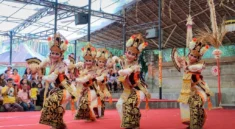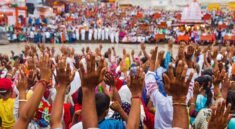
Beijing, the sprawling capital of China, is a mesmerizing fusion of ancient grandeur and modern dynamism. With a history spanning over three millennia, Beijing has served as the heart of multiple dynasties and continues to pulse with cultural significance today. This city has been the political, cultural, and spiritual center of China for centuries, a role that has left an indelible imprint on its streets, monuments, and everyday life.
From the towering walls of the Forbidden City to the tranquil temples hidden among its hutongs, from the monumental Great Wall to the poetic gardens and imperial parks, Beijing tells the story of a civilization that has shaped the world. Walking through Beijing is like opening a living history book—each page revealing the power, elegance, and resilience of a city that continues to evolve without forgetting its roots.
A Legacy Forged by Emperors
Beijing’s dynastic history begins in earnest during the Yuan Dynasty in the 13th century when Kublai Khan established the city as the imperial capital of the Mongol Empire. It was then known as Dadu. However, it was during the Ming (1368–1644) and Qing (1644–1912) dynasties that Beijing truly flourished as the seat of imperial power, transforming into the ceremonial and political epicenter of China.
The city’s layout, especially the central axis running from the Bell Tower in the north to the Temple of Heaven in the south, was meticulously designed to reflect the Confucian ideals of harmony and order. This axis not only guided the construction of palaces and temples but also continues to influence urban planning in modern Beijing.
The Forbidden City: An Imperial Masterpiece
No site better captures the grandeur of dynastic China than the Forbidden City. Officially known as the Palace Museum today, it was the home of 24 emperors—14 from the Ming and 10 from the Qing dynasties. Enclosed by a 10-meter-high wall and a wide moat, the Forbidden City is the world’s largest palace complex, with over 980 surviving buildings and 8,000 rooms.
Walking through the Meridian Gate, you step into a world of gold roofs, red walls, and intricately carved dragon motifs. Each hall, pavilion, and courtyard was designed to impress and to signify the emperor’s divine right to rule. The Hall of Supreme Harmony, where coronations and ceremonies took place, stands as the tallest and most important building, showcasing imperial authority and Confucian principles.
Today, the Forbidden City is not just a preserved monument—it is a vibrant museum housing some of China’s most treasured artifacts, from ancient calligraphy to imperial thrones, giving visitors a tangible connection to a vanished world of emperors and empresses.
Temple of Heaven: Sacred Grounds of Worship
Just south of the Forbidden City lies the Temple of Heaven, a UNESCO World Heritage site that reflects ancient China’s spiritual beliefs and cosmological understanding. Built in the early 15th century during the Ming Dynasty, the temple complex was where emperors prayed for good harvests and offered sacrifices to Heaven.
The most iconic structure here is the Hall of Prayer for Good Harvests, a magnificent circular wooden building without a single nail, supported entirely by intricately painted pillars. The symbolism is profound: the circular shape represents Heaven, while the square layout of the grounds represents Earth.
The park surrounding the temple is also a microcosm of Chinese life. Early mornings here see residents practicing tai chi, playing musical instruments, and engaging in traditional exercises—offering a glimpse of how historical sites remain intertwined with daily living.
The Great Wall: A Testament to Dynastic Defense
While the Great Wall of China stretches across multiple provinces, one of the most visited and accessible sections lies just outside Beijing. The Badaling, Mutianyu, and Jinshanling sections of the wall offer dramatic vistas and well-preserved architecture.
Constructed and expanded over centuries, especially during the Ming Dynasty, the Great Wall stands as a monumental defense project aimed at protecting the empire from northern invasions. Today, it is not just a feat of engineering but a symbol of resilience and unity.
Climbing the Wall is both a physical and emotional journey. With every stone step, you trace the footsteps of soldiers, laborers, and emperors—all part of a civilization that understood both the power and fragility of borders.
Hutongs and Siheyuan: Living Heritage of Beijing
Beyond the grand palaces and walls, the heart of Beijing’s dynastic and cultural life is found in its hutongs—narrow alleyways that crisscross the older parts of the city—and siheyuan, the traditional courtyard homes that line them.
These neighborhoods preserve the rhythm of community life that has existed for centuries. Wandering through a hutong feels like stepping back in time. You might hear the clatter of mahjong tiles, smell dumplings steaming in bamboo baskets, or see children playing under red lanterns strung across alleyways.
Some hutongs have become trendy spots with boutique cafes and art galleries, while others remain home to generations of families. Nanluoguxiang and Dashilar are among the most famous, offering a blend of tradition and modernity that encapsulates Beijing’s ongoing story.
Cultural Riches: Opera, Calligraphy, and Cuisine
Beijing’s cultural significance is not only etched in its buildings but also expressed through its arts. Peking Opera, with its stylized gestures, elaborate costumes, and piercing vocals, is one of China’s most celebrated art forms. Performances at the Liyuan Theatre or Chang’an Grand Theatre transport audiences into tales of ancient heroes and courtly intrigues.
Calligraphy, too, is a revered tradition. The National Museum of China and various art institutions display scrolls and writings that highlight the depth of Chinese philosophical and literary heritage.
Food is another key to understanding Beijing’s culture. Peking duck, roasted to crispy perfection and served with pancakes, spring onions, and hoisin sauce, is the city’s culinary crown jewel. Beyond duck, local specialties such as zhajiangmian (noodles with soybean paste), baozi (steamed buns), and hot pot reflect the region’s flavors and communal dining customs.
Imperial Gardens and Summer Retreats
The emperors didn’t just build palaces; they also created elaborate retreats. The Summer Palace, located on the outskirts of Beijing, was the favored warm-weather residence of the Qing emperors. Centered around Kunming Lake and the Longevity Hill, the palace is a masterpiece of Chinese landscape design, combining natural beauty with architectural sophistication.
The Long Corridor, painted with over 14,000 colorful scenes, leads visitors to the iconic Marble Boat and the Tower of Buddhist Incense, offering panoramic views and a tranquil escape from the city’s bustle.
The Old Summer Palace (Yuanmingyuan), though now in ruins after being destroyed during the Second Opium War, evokes a sense of poetic nostalgia. Its remaining bridges, lakes, and stone sculptures whisper stories of lost grandeur.
Modern Beijing: A City of Contrasts
While steeped in tradition, Beijing is also a city of transformation. The CCTV Headquarters, designed by Rem Koolhaas, stands as a symbol of architectural innovation. Sanlitun and 798 Art District represent the creative pulse of a new generation, where modern art, fashion, and youth culture thrive.
The 2008 Summer Olympics left a legacy of modern infrastructure, including the iconic Bird’s Nest Stadium and Water Cube, now repurposed for public events and entertainment.
Yet, even in its modernity, Beijing continues to honor its past. Museums, festivals, and educational initiatives ensure that the city’s dynastic heritage remains a source of pride and inspiration.
Final Reflections: A Living Chronicle
Beijing is more than a capital—it is a living chronicle of China’s dynasties, philosophies, and people. Every structure, from the Forbidden City to the humblest courtyard, tells a story. Every cultural practice, from opera to culinary traditions, reveals a layer of identity shaped by centuries.
To walk through Beijing is to engage with the spirit of a civilization that has endured invasions, revolutions, and modernization, yet remains grounded in its cultural DNA. Whether you come seeking imperial palaces, ancient wisdom, or the vibrant beat of a modern metropolis, Beijing offers a journey both outward and inward—a journey into the soul of one of the world’s greatest cities.




